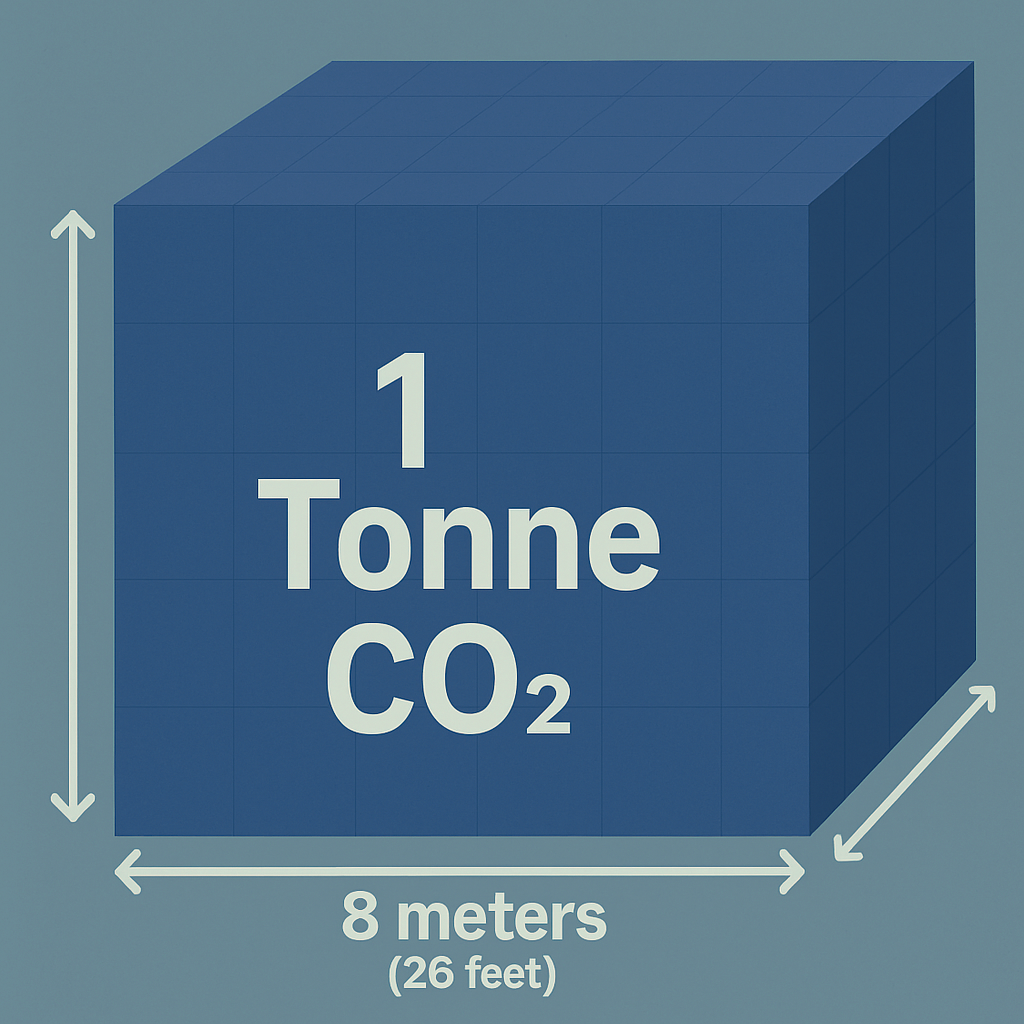This blog was written by Synergy Project Technician Cameron Thompson.
Carbon dioxide (CO2) is the most common greenhouse gas in our atmosphere, and much of it comes from human activity. From driving cars to powering our homes with fossil fuels, we release significant amounts of CO2 into the air. Among the seven greenhouse gases recognized under the Kyoto Protocol, CO2 stands out as the most prevalent. As such, carbon dioxide is the benchmark for calculating greenhouse gas (GHG) emissions and their associated environmental impact.
The standard unit for these calculations is tonnes of carbon dioxide equivalent (tCO2e). This metric enables businesses, governments, NGOs, and other organizations to quantify their environmental impact using tangible metrics. The “equivalent” represents all seven greenhouse gases converted into a measure of carbon based on their global warming potential. Businesses that measure their emissions establish an understanding of their top emission sources, enabling them to set reduction targets and implement operational practices to reduce these, such as making their operations more efficient, switching to low-emission fuel sources, and other reduction initiatives.
A tonne (or metric ton) is a unit of mass that is equal to 1,000 kilograms, or approximately 2,200 pounds. When referring to a tonne of CO2, we are talking about the mass of carbon dioxide gas equivalent to 1,000 kilograms (How Much Is a Ton of Carbon Dioxide?, 2023). This is approximately 500 cubic meters, so imagine a cube with each side measuring about 8 meters (26 feet) full of gas – that is roughly the volume in one tonne of carbon dioxide.

How to Calculate a Tonne of CO2
The Greenhouse Gas Protocol Corporate Accounting and Reporting Standard is the carbon accounting standard that guides the calculation of greenhouse gas emissions. The calculation of tonnes of carbon dioxide equivalent (tCO2e)uses emission factors. This value represents the weight of a pollutant against the weight, volume, distance, or duration of the pollutant’s properties. These emission factors are then used to convert all pollutants to carbon dioxide equivalent. For example, if a car uses 500 liters of gasoline, and Environment Canada’s National Inventory report suggests the emissions factor for gasoline is 2.315 kg CO2e per litre (which includes the impacts of CO2, CH4, and N2O) we would multiply 500L by 0.02315 to estimate the carbon equivalent impacts of 1.157 tCO2e. Another example: consuming 380 litres of diesel fuel, when calculated using the emissions factor relative to British Columbia, produces approximately 1 tonne of carbon dioxide.

At Synergy, tCO2e is calculated using data from our clients’ operations, which enables us to determine their annual carbon footprint, expressed in tonnes of carbon dioxide equivalent.
Why Measure?
As we mentioned, businesses that measure their emissions establish an understanding of their top emission sources, enabling them to set reduction targets and implement operational practices to reduce these. From our experience with our client’s Annual Greenhouse Gas Inventories, we see that a significant source of CO2 production is the combustion of fossil fuels, including coal, oil, and natural gas (though, of course, there are exceptions).
The carbon intensity of fuels reflects the amount of CO2 that will be emitted, emphasizing the importance of using low-carbon fuel alternatives when applicable. Strategies to reduce the purchasing, consumption, and disposal of products and materials can help achieve this reduction while also saving costs. Additionally, staying updated on technological advancements can be highly beneficial when searching for technologies that aim to reduce emissions. Tracking the carbon footprint on an annual basis provides a level of consistency that allows for year-over-year trend analysis, clearly defining the impact an organization has on its environment.
Conclusion
At Synergy, we help businesses measure their environmental impact by calculating their annual greenhouse gas inventories and providing the tools necessary to create a culture of sustainability within their organization. The team at Synergy delivers a hands-on approach to measuring carbon footprints, working collaboratively with businesses to achieve their sustainability goals and to ensure long-term success. Specializing in greenhouse gas accounting, Synergy helps organizations make meaningful changes to their operations and environmental impact.
Interested in measuring your environmental impact?
Contact us for more information!
References
–How much is a ton of carbon dioxide? | MIT Climate Portal. (n.d.). Retrieved August 14, 2024, from https://climate.mit.edu/ask-mit/how-much-ton-carbon-dioxide
-Environment and Climate Change Canada. (2024). Environment Canada’s National Inventory Report (1990-2021): GREENHOUSE GAS SOURCES AND SINKS IN CANADA. Government of Canada.
-The GHG Protocol Initiative Team. (2015). A Corporate Accounting and Reporting Standard REVISED EDITION. World Resources Institute.
-The GHG Protocol Initiative Team, C40 Cities Climate Leadership Group, ICLEI – Local Governments for Sustainability, & World Resources Institute. (2021). Global Protocol for Community-Scale Greenhouse Gas Emission Inventories (GPC). World Resources Institute. https://ghgprotocol.org/sites/default/files/standards/GPC_Full_MASTER_RW_v7.pdf
-What does a tonne of CO2 look like? (2022, August 25). https://www.edenseven.co.uk/greenhouse-gas-equivalencies-calculator
